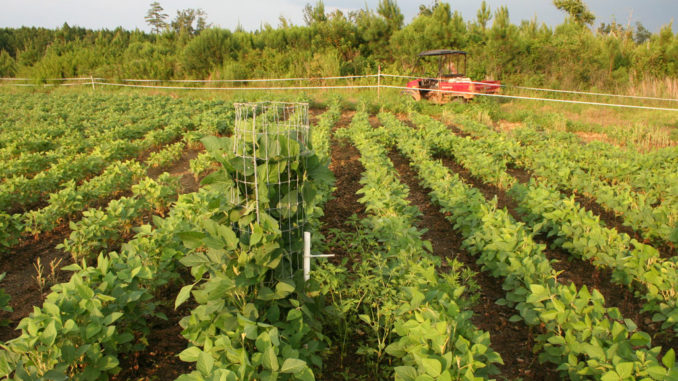
Cool-season plantings should be planned
Even though August is often regarded as the hottest month, it is okay to begin thinking about deer season. For lucky hunters in South Carolina’s Lowcountry, the velvet hunts begin at the halfway point of the month, but for the rest of the Carolinas, there is still some time to prepare.
For any hunter whose deer season begins in August or September, lush fields of soybeans, peanuts and maybe a little early corn are ideal places to be when bucks are still in their late-summer patterns. These large food sources generally corral and sustain the herd through the summer, and bucks will still frolic in their bachelor groups, making for an ideal hunting situation before the herd understands that the killing season is creeping up.
For cool-season food plotters, August is an ideal time to plan and begin implementing a food-plot program on their hunting lands. And to have the best plots that receive the most attention from wildlife, food plotters need to follow the farmers lead and refrain from cutting any corners.
The single contributor to deer movement is the availability of preferred foods. While it takes additional resources to establish and maintain hearty food plots, their merit as a nutritional, high-quality food source is well known and proven. Deer will travel for miles to find a rich food source; food drives movements throughout the animal kingdom, and for good reason. During the fall and winter months, food becomes very important for deer and other wildlife.
Developing a successful food plot is no more than farming, plain and simple. Farming is our world’s longest-living profession, cultivated over thousands of years. Through thousands of years of experience paired with 21st-century technology, today’s farmers know how to grow a crop. While a degree from an established college with a concentration in chemistry, fertilization and meteorology may be helpful, anybody can grow a rich food plot by making a the right decisions at the right time. However, harrowing a field, spreading seed and covering with soil are only parts of the food-plot equation. A comprehensive approach with preparations and a well-executed plan will help make those dreams of a thick and hearty food plot become a reality.
The most-important factor in establishing a lush food plot that’s highly-desired by deer and other wildlife may not have anything to do the actual seed or seed mix planted. In fact, deer will eat almost any cultivated agriculture seed, as long as the crop is lush, tender and just tastes good. While seed choice plays an important role, many hunters and wildlife managers spend too much time choosing that perfect seed or seed mix and less time preparing the soil, planting at the right time, protecting the young crop and keeping the plot growing.
Several components to planting food plots are critical. Site suitability is critical for crop survival and success. An initial soil test followed by acid-base correction from liming and supplemental nutrient additions should always be done. When soil pH is hovering below the recommended threshold for the crop intended for cultivation, proper soil-chemistry corrections are required before planting season. Unfortunately, this can cost a lot of money and significant time investments to achieve, but the results are well worth it. If conditions are right, plots can provide massive amounts of food during deer season, when hunters and deer need it the most.
Next, land managers can choose the right seeds and mixes recommended for their sites and prepare to plant. The next most-important part of planting is soil moisture and planting depth. Seeds must have adequate soil moisture to germinate and survive the very early stages of life. If planted in dry soils, tender young plants will die before they get a chance to provide any benefits to wildlife. And controlling planting depth is a crucial component. Seeds must be planted within the recommended zone ideal to promote the growth and survival of the plants.
Cool-season food plots that are grown correctly can make a hunting season extremely rewarding for hunters with reasonable time investments. Nothing should excite a hunter more than watching a trophy buck prance across one of the precious food plots with the lush field of greens covering half the height of his legs. Rich, hearty food plots quickly pay off after you’ve logged countless hours in the fields working to make them productive.




Be the first to comment